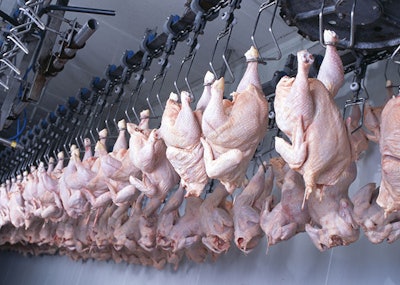
The beef and pork markets have been more strongly affected by plant and foodservice closures caused by COVID-19 compared to the poultry industry, said Will Sawyer, lead animal protein economist at CoBank.
“The impact has been felt very differently across the animal protein sector,” he explained. “However, one thing that we have learned in the protein markets over the last month is how, during this COVID-19 pandemic, we're all in this together,”
Sawyer shared his thoughts on how COVID-19 is affecting the global poultry industry in an April 28 webinar sponsored by Boehringer Ingelheim.
Retail and foodservice challenges
Because of COVID-19, consumers have flocked to retail and other grocery stores to stock up on pandemic pantries. In the meantime, foodservice demand has gone way down, as schools and hotels have closed and restaurants have shifted to takeout and delivery only.
“Beef is first and foremost feeling that pain because the full-service sit-down restaurant category is largely closed. That is a huge component of what drives the bottom line for beef producers. Chicken is doing a little bit better given the fast food exposure,” he added.
Plant closures having an impact
The latest bottleneck putting pressure on the animal protein supply chain is the growing number of plant closures nationwide. In the past week, 21 beef and pork processing plants have announced temporary or permanent closures so that team members could undergo testing for COVID-19.
“In general, we have been pleasantly surprised at the lack of severe cutbacks and plant closures in the chicken space compared to what we've seen in beef and pork,” Sawyer said.
Poultry plants are typically smaller than red meat plants, employing fewer workers, which may help explain why there have been fewer poultry plant closures. In addition, poultry plants have been quicker to adopt automation and other new technologies, allowing for greater space between workers in facilities.
View our continuing coverage of the coronavirus/COVID-19 pandemic.
Like what you just read? Sign up now for free to receive the Poultry Future Newsletter.


















